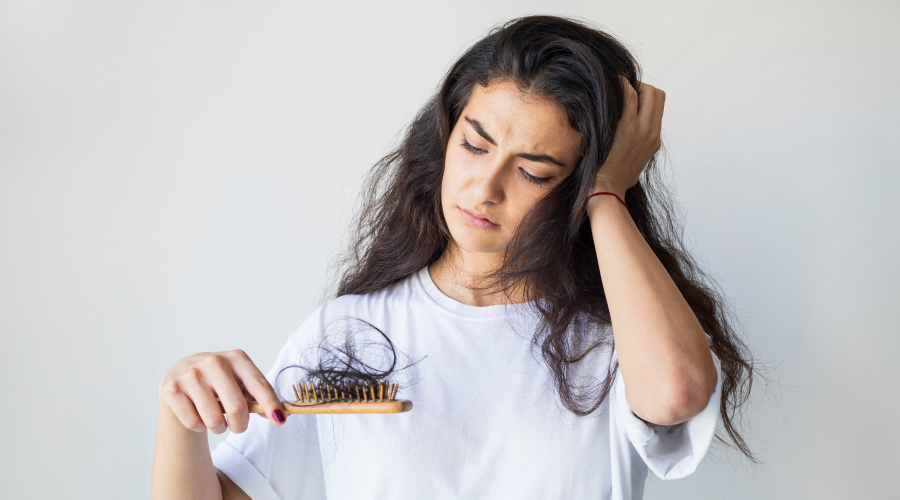Hair thinning is a condition that many people encounter at some point in their lives, whether gradually over time or seemingly all at once. It differs from complete hair loss or baldness in that the hair becomes less dense and loses its natural fullness, making the scalp more visible. This change in hair volume can be subtle at first but may become more noticeable as time progresses.
Causes of Hair Thinning
One of the most common reasons behind thinning hair is genetics. Hereditary hair loss, also known as androgenetic alopecia, often runs in families and can affect both men and women. This condition typically becomes more pronounced with age, as the hair follicles shrink and produce finer strands. Hormonal shifts also play a significant role. Events such as
1. pregnancy
2. menopause
3. thyroid imbalances
4. hormonal disorders like polycystic ovary syndrome
these can all disrupt the normal hair growth cycle, leading to increased shedding and thinner strands. Nutrition is another crucial factor. Hair relies on a steady supply of essential nutrients such as protein, iron, vitamin D, and zinc. When the body lacks these nutrients—due to restrictive dieting, poor eating habits, or underlying health conditions—the hair may become weak, brittle, and prone to falling out more easily. Stress, both emotional and physical, can trigger a condition known as telogen effluvium, in which hair prematurely enters the resting phase and falls out more quickly than usual. Though this form of shedding is often temporary, it can still be alarming and frustrating for those affected. Medical issues and medications also contribute to hair thinning. Autoimmune diseases, scalp infections, and chronic illnesses may interfere with the normal function of hair follicles.
In addition, treatments for conditions such as
1. cancer
2. depression
3. medications for high blood pressure
Can negatively affect hair growth. On a more external level, certain hair care practices can exacerbate thinning. Frequent use of heat styling tools, harsh chemical treatments, tight hairstyles that pull on the roots, and low-quality hair products can all cause damage that leads to thinner, more fragile hair over time.
Recognizing the Signs
The signs of thinning hair are often first noticed during daily grooming routines. Individuals may observe
1. More hair in their brushes
2. Wider part in the hair
3. Ponytail that feels noticeably smaller in diameter.
Hair might also grow back more slowly or appear finer and shorter than before. These subtle changes can accumulate and result in a marked difference in overall hair appearance.
Treatment and Management Options
Fortunately, there are various ways to manage and potentially reverse hair thinning, depending on its cause. Topical treatments such as minoxidil are widely used to stimulate hair follicles and encourage regrowth. In some cases, doctors may prescribe oral medications that adjust hormone levels or block certain biological pathways contributing to hair loss.
For those whose thinning hair is linked to diet or lifestyle, changes in nutrition. stress management, and sleep can make a meaningful impact on hair health. More advanced options like platelet-rich plasma therapy or hair transplants are available for individuals seeking long-term solutions, especially when other treatments prove ineffective.
In the meantime, cosmetic products such as shampoos and styling sprays can enhance the appearance of fullness and provide a confidence boost.
When to Seek Medical Advice
If hair thinning is rapid, persistent, or accompanied by other symptoms such as itchiness, pain, or systemic health changes, it is important to seek medical advice. A dermatologist can help determine the underlying cause and recommend the most appropriate treatment based on individual needs.
Final Thoughts
In summary, hair thinning is a multifaceted issue influenced by genetics, hormones, nutrition, stress, health conditions, and lifestyle choices. While it can be distressing, a variety of effective treatments and strategies are available to help restore volume and vitality. Taking early action and seeking professional guidance can make a significant difference in both hair appearance and overall well-being.
